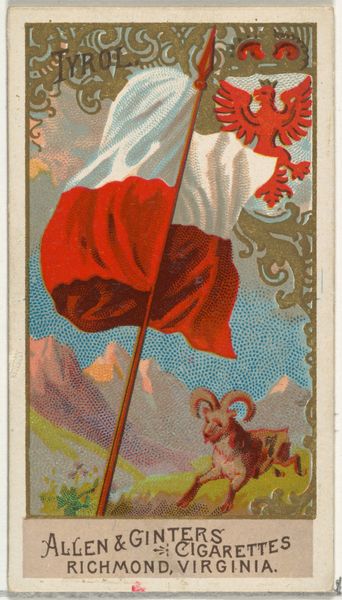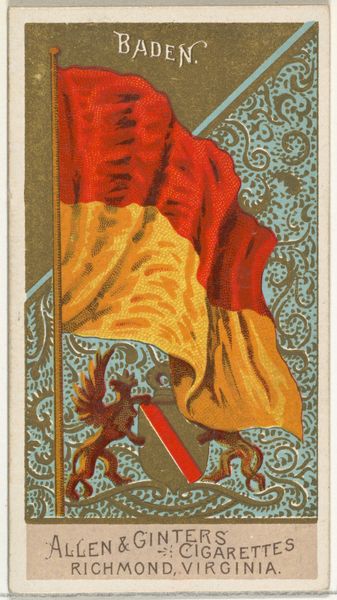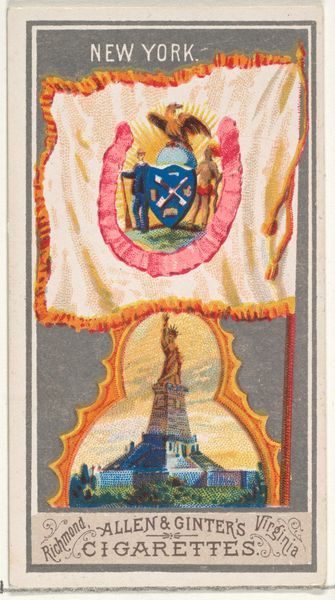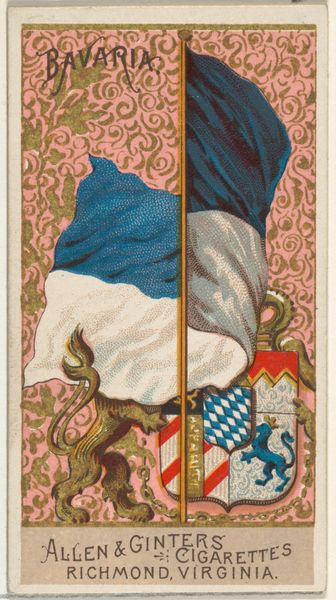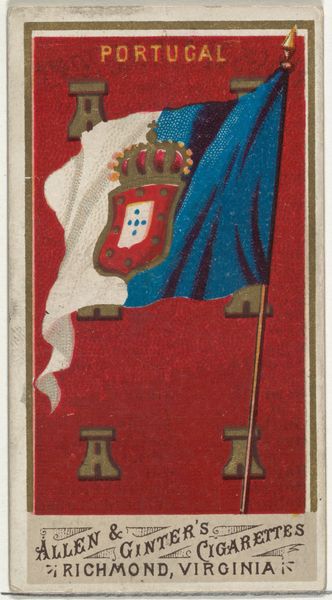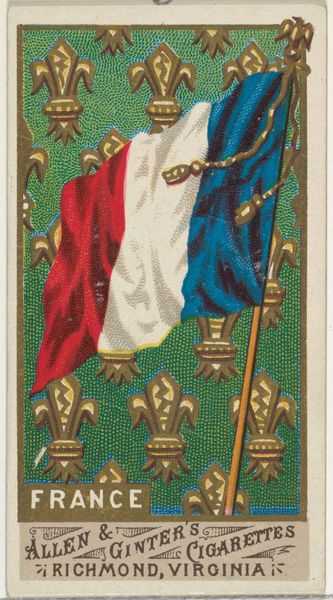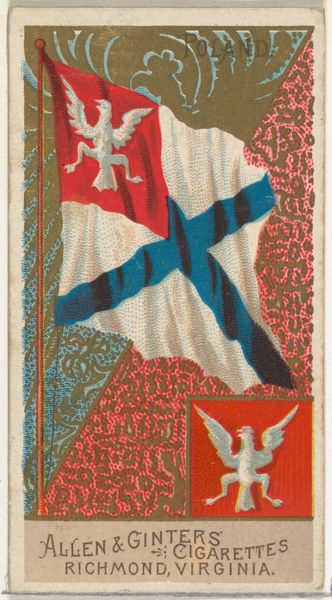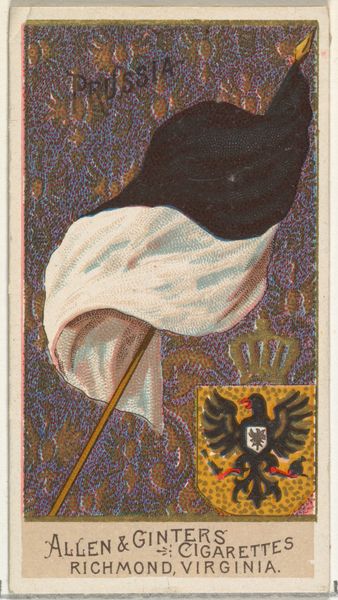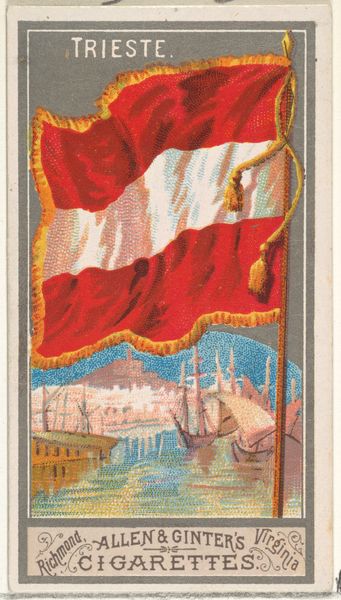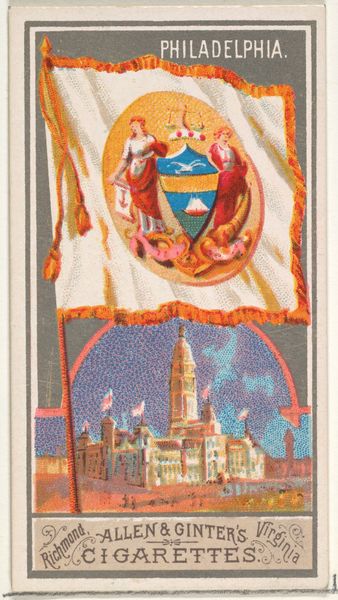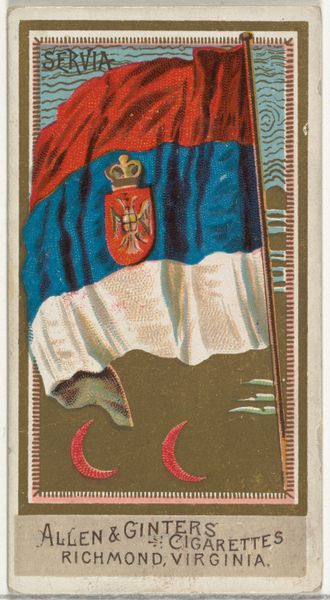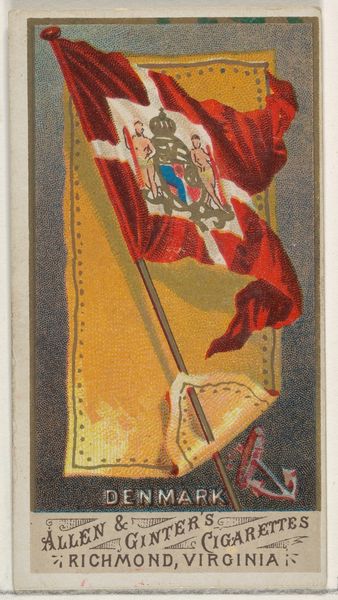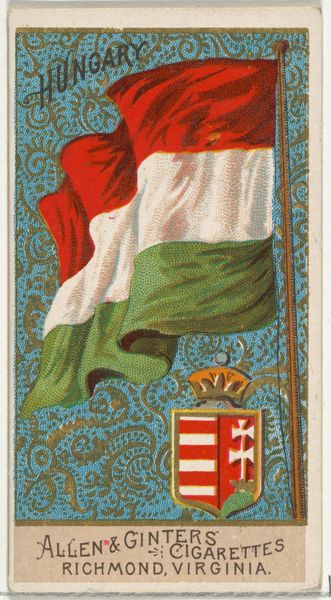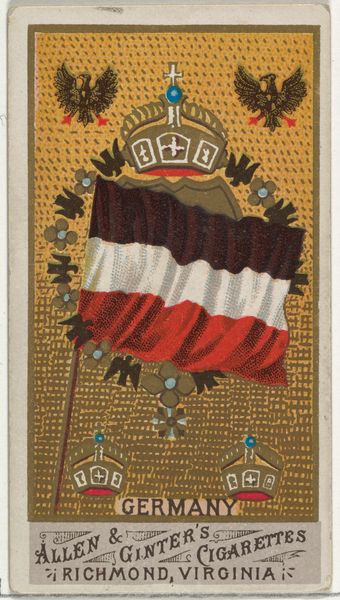
Bohemia, from Flags of All Nations, Series 2 (N10) for Allen & Ginter Cigarettes Brands 1890
0:00
0:00
drawing, graphic-art, print, watercolor
#
drawing
#
graphic-art
# print
#
watercolor
#
watercolor
Dimensions: Sheet: 2 3/4 x 1 1/2 in. (7 x 3.8 cm)
Copyright: Public Domain
Curator: So, we’re looking at "Bohemia, from Flags of All Nations, Series 2," a cigarette card made around 1890 by Allen & Ginter. Editor: The card is wonderfully vibrant! I'm immediately struck by how richly patterned the whole thing is. Curator: It's a chromolithograph, meaning each color was applied using a separate printing stone. It’s primarily watercolor and other print media on paper. Editor: Cigarette cards... They’re such curious objects. They were originally functional, meant to stiffen the packs. But quickly became marketing tools and collectible art! Curator: Exactly! And Allen & Ginter were pioneers in this practice, turning tobacco consumption into an act of collecting national symbols and, implicitly, expanding global consciousness for their consumers. Think about the accessibility—art produced for the masses. Editor: I do find it a bit unsettling how intimately linked commerce and nationalism are. The Czech lion pops so nicely from its heraldic shield but then I'm reminded it’s essentially product placement for, in this case, highly addictive goods. Curator: Absolutely. There’s an inherent tension between the seemingly benign act of collecting these attractive cards and the larger social and economic forces at play. The exotic appeal of ‘Bohemia’ helped fuel not just collecting fever, but also consumption of cigarettes made in Richmond, Virginia, within specific networks of global production and taste. Editor: Considering how widely circulated these cards were, their production must have involved entire workshops of artists, artisans, and factory workers… people and processes we almost never acknowledge today when appreciating pieces like this one. Curator: And their labor conditions would’ve been ripe for exploitation… yet here they were, creating intricate artworks for the masses! That tension is inescapable and vital. It reshapes our understanding of art history to reflect production and the hidden structures. Editor: Right. Makes me question the relationship between "high" art and these everyday, mass-produced objects, prompting me to wonder—who decides what's culturally valuable and what's "mere" commercial ephemera? Curator: Precisely the right questions to keep asking ourselves. This little piece has loads to unpack. Editor: Indeed! Makes you appreciate these little commercial cards beyond the superficial decorative level.
Comments
No comments
Be the first to comment and join the conversation on the ultimate creative platform.
